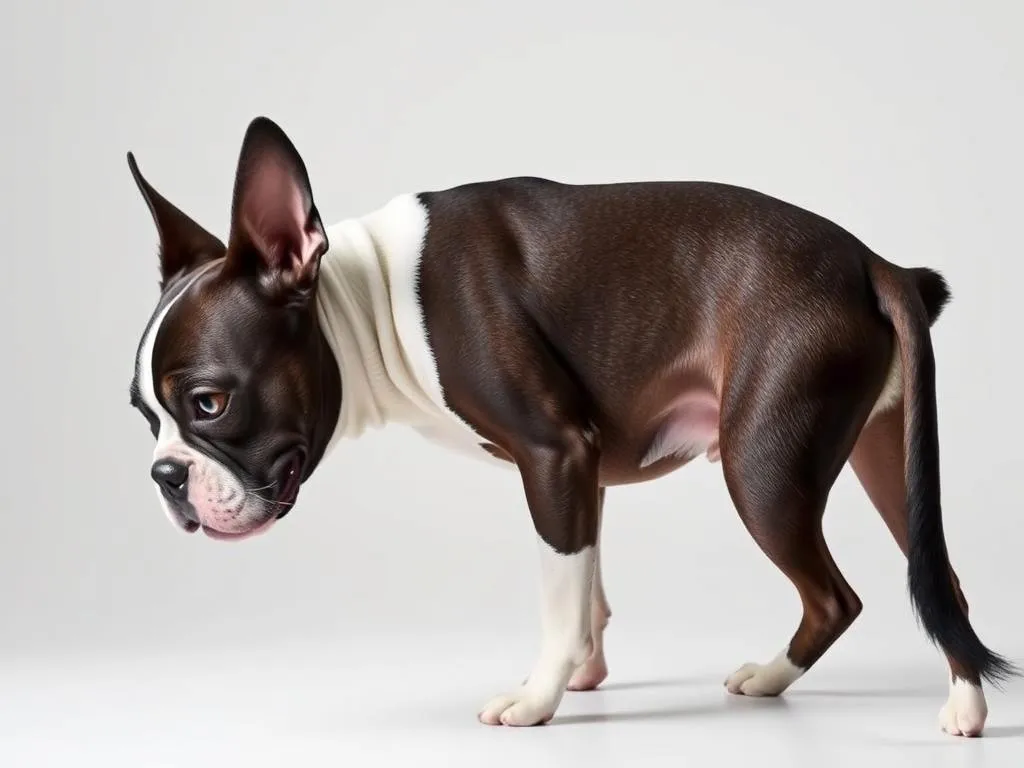
Introduction
Boston Terriers are beloved for their charming personalities, playful demeanor, and unique physical traits. As a breed that has gained popularity across various households, these small dogs often capture the hearts of pet owners with their affectionate nature. However, to fully appreciate and care for a Boston Terrier, it is essential to understand their physical characteristics, including one of the most intriguing aspects: their tails.
The question, “does Boston Terrier have a tail?”, is not merely a matter of curiosity; it touches on breed standards, health implications, and even behavioral traits. Understanding tail characteristics can significantly enhance the experience of dog ownership, as it plays a crucial role in communication and overall well-being.
Understanding Boston Terriers
History of the Boston Terrier
The Boston Terrier originated in the late 19th century, developed from the crossbreeding of the English Bulldog and the now-extinct English Terrier. Initially bred for their fighting abilities, these dogs quickly transitioned into affectionate companions. Their gentle disposition and adaptability made them suitable for various living situations, from urban apartments to spacious homes. Today, the Boston Terrier is recognized as a friendly, intelligent breed that thrives on human interaction.
Physical Characteristics
Boston Terriers are compact dogs, typically weighing between 10 to 25 pounds and standing about 15 to 17 inches tall. Their coat is short and smooth, often coming in a combination of black, brindle, or seal with white markings. Their distinctive facial structure, characterized by a flat face and large, expressive eyes, adds to their endearing appearance. These features contribute to their unique charm and make them a favorite among dog lovers.
Tail Characteristics of Boston Terriers
Tail Types in Boston Terriers
When discussing whether a Boston Terrier has a tail, it’s important to note that the breed can exhibit different tail characteristics. Some Boston Terriers have a “natural tail,” which is typically short and straight, while others may have a “bobtail,” which is even shorter or absent altogether. The tail is generally positioned low and can vary significantly in length among individual dogs.
Genetic Factors Influencing Tail Type
The tail characteristics in Boston Terriers are influenced by genetic factors. Breeders often select for specific traits, including tail length and structure, which can lead to variations within the breed. Understanding these genetic traits can help prospective owners know what to expect when selecting a Boston Terrier.
Tail Variations
It’s crucial to acknowledge the variations among individual Boston Terriers. While purebred Boston Terriers have distinct tail characteristics, mixed breeds may exhibit a wide range of tail types. The influence of other breeds in a mixed-breed Boston Terrier can lead to entirely different tail lengths, shapes, and positions.
Health Implications Related to Tail
Common Health Issues
The health of a Boston Terrier’s tail can be indicative of overall well-being. Common health issues related to tails include injuries from rough play or accidents, which can lead to pain or discomfort. Additionally, some Boston Terriers may experience skin conditions around the tail area, making it essential for owners to monitor their dog’s health closely.
Tail Injuries and Care
Identifying a tail injury can be straightforward, as signs may include limping, excessive licking, or yelping when the tail is touched. If you suspect your Boston Terrier has a tail injury, it’s vital to consult a veterinarian for appropriate care. Regular veterinary check-ups can help ensure that any tail-related health issues are addressed promptly.
Tail and Behavior
Communication through Tail Movement
A Boston Terrier’s tail is more than just a physical feature; it serves as a key component of canine communication. Tail movements can signify different emotions. For example, a wagging tail usually indicates excitement or happiness, while a lowered tail may suggest fear or submission. Understanding these signals can improve the relationship between owners and their pets.
Behavioral Traits Associated with Tail
The characteristics of a Boston Terrier’s tail can influence their behavior. For instance, a dog with a longer tail might exhibit different social behaviors compared to one with a bobtail. Additionally, tail position can play a role in how Boston Terriers interact with other dogs, affecting their socialization and playfulness.
Breed Standards and Tail
American Kennel Club (AKC) Standards
The American Kennel Club (AKC) has specific standards for Boston Terriers, including guidelines on tail characteristics. According to the AKC, a Boston Terrier’s tail should be short, straight, and carried low. This tail structure is considered ideal for competitions and dog shows, reflecting the breed’s unique physical attributes.
Tail in Mixed Breeds
Tail characteristics can vary significantly in mixed-breed Boston Terriers. When a Boston Terrier is bred with another breed, the resulting offspring may inherit different tail traits, which can affect their appearance and behavior. Understanding these variations is essential for potential owners, as it impacts the overall expectations for grooming, health, and behavior.
Tail Care and Grooming
Grooming Tips for Boston Terrier Tails
Maintaining a Boston Terrier’s tail hygiene is vital for their overall health. Regular grooming can prevent matting and maintain skin health. Here are some tips for grooming your Boston Terrier’s tail:
- Regular Brushing: Use a soft bristle brush to remove tangles and debris.
- Bathing: Bathe your dog as needed, focusing on the tail area to keep it clean.
- Inspect for Irritations: During grooming, check for signs of irritation or injury, such as redness or swelling.
Regular Health Checks
Routine checks of the tail during grooming are essential for early detection of potential health issues. Look for any unusual bumps, discoloration, or signs of discomfort. If you notice anything concerning, consulting a veterinarian can provide peace of mind and ensure your pet’s well-being.
Conclusion
In summary, the question of “does Boston Terrier have a tail?” encompasses a wide array of topics, from breed history and physical characteristics to health implications and grooming practices. Understanding the different tail types and their significance can enhance the experience of owning a Boston Terrier and foster a deeper bond between pet and owner. By paying attention to tail health and behavior, owners can ensure their Boston Terriers lead happy and healthy lives.
FAQs
Do all Boston Terriers have tails?
Not all Boston Terriers have tails in the same way. Some may have a natural tail, while others may have a bobtail or no tail at all, depending on breeding practices.
What are the differences between a Boston Terrier and other breeds regarding tails?
Boston Terriers typically have short tails that are carried low, distinguishing them from other breeds that may have longer tails or different tail structures.
How can I tell if my Boston Terrier has a healthy tail?
A healthy tail should be free of bumps, redness, or irritation. Regular grooming and health checks can help ensure your Boston Terrier’s tail remains in good condition.
Can the tail type affect my Boston Terrier’s behavior?
Yes, tail type can influence behavior and communication. For example, tail movements can signify different emotions, impacting how your Boston Terrier interacts with its environment and other dogs.









